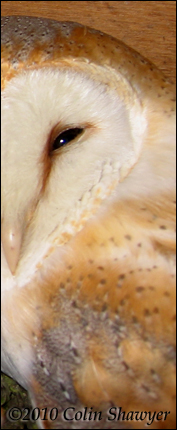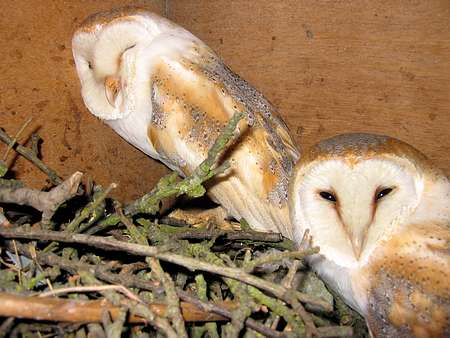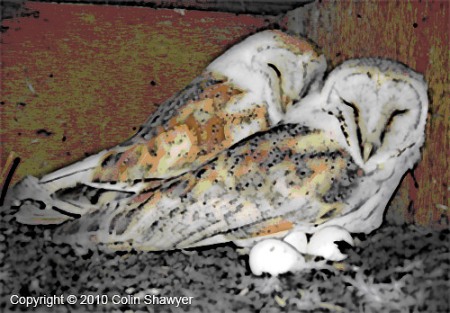As a follow up to my earlier season visit on 12th April to a sample of nest sites, I carried out a further visit to a second sample of 11 sites on 24th April.
Barn Owl pairs were present at 9 sites and at 6 sites 2-3 eggs were present. At a further site, 5 eggs had been laid. None had yet completed their full clutch. Owls were missing from two traditionally-used sites, suggesting the loss of two breeding pairs, having probably succumbed to the prolonged winter snows. If this sample is anything to go by we might anticipate a small reduction in breeding occupancy this year.
 By compiling data from the current visit and that of the previous one, out of a total sample of 16 active sites where pairs were present, 5 started laying between 9th and 12th April and a further 6 pairs between 16th and 19th April. This indicates that there are now two distinct first egg dates and that that a significant number, possibly 30% of the population in Britain and Ireland, have yet to lay, probably in early May.
By compiling data from the current visit and that of the previous one, out of a total sample of 16 active sites where pairs were present, 5 started laying between 9th and 12th April and a further 6 pairs between 16th and 19th April. This indicates that there are now two distinct first egg dates and that that a significant number, possibly 30% of the population in Britain and Ireland, have yet to lay, probably in early May.
In most years about 70% of the population lay their first egg at much the same time, within a narrow window of just a few days. In summary it looks as if in 2010 we might see two distinct peaks of activity around the 10th and 20th April and a third during the first or second week of May.
Jackdaw activity seems high this year with clutches of 6 eggs being the norm this year in my second sample area. The photo below shows a pair of Barn Owls on eggs which were having to resist being entombed by nest material which the Jackdaws have only just given up depositing!
I would be interested to hear of any of early observations from Barn Owl fieldworkers at: colinshawyer@aol.com
The Barn Owl is specially protected under Schedule 1 of the Wildlife and Countryside Act, making it unlawful to intentionally or recklessly disturb it whilst it is preparing to nest or is at the nest with eggs or young, or to disturb its dependent young.
Inspection of nest sites can only be undertaken by experienced fieldworkers holding a licence issued by the appropriate countryside agency: Countryside Council for Wales, Natural England, Northern Ireland Environment Agency, Scottish Natural Heritage.

